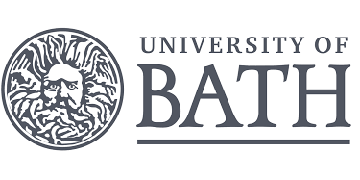University of Bath: Releasing charge from robotic aircraft can change water droplets, study finds
Real world experiments have demonstrated that releasing charge led to detectable changes in the size and number of fog droplets. The new results are published in the journal Geophysical Research Letters.
The research follows earlier findings using a supercomputer to simulate how charge could influence raindrop formation, by encouraging growth of small water droplets. This was reported in the Proceedings A of the Royal Society.
Meteorologists Giles Harrison, Maarten Ambaum and Keri Nicoll from the universities of Bath and Reading were awarded a $1.5 million research grant from the United Arab Emirates Rain Enhancement programme in 2017 to investigate the electrical aspects of rainfall.
Giles Harrison, Professor of Atmospheric Physics at the University of Reading and Visiting Professor at Bath in the Electronic Engineering Department, said: “We are pleased with our results from five years of investigations on droplets and charge, which span field measurements, computer simulations and new technology development.
“Our latest work has demonstrated how to use small aircraft to release sufficient charge to influence the behaviour of water drops.
“It has been rewarding to work with many international scientists on this ambitious and imaginative programme led by the National Center for Meteorology in the UAE.”
Some 2.3 billion people live in water-stressed countries according to the UN. Research into the properties of clouds and rainfall could therefore one day help avoid conflict over water, mitigate against using energy-intensive techniques to desalinate seawater, and provide enough water for a growing global population.
How did the experiments work?
Professor Harrison and his team, which included mechanical and electrical engineers from the University of Bath, carried out two experiments in fogs.
The first experiment was at the University’s farm in Sonning, Berkshire, in 2020, where charge was released into fog using a fixed array of electric emitters.
The team found that there were more tiny water droplets when the charge was released, reported in the journal Physical Review Research.
Following this, the Bath team, led by Dr Pejman Iravani (Department of Mechnical Engineering), developed a number of small unmanned aerial vehicles (UAV) that could carry a suite of meteorological sensors for monitoring and releasing charge.
Bespoke charge, cloud droplet and ionisation sensors made by the team were integrated into a Skywalker X8 airframe alongside a sophisticated autopilot system. This is described in the American Meteorological Society’s Journal of Atmospheric and Oceanic Technology.
In 2021, the team travelled to a farm in Somerset to operate the UAV, which flew in circles above low level fog and it released positive and negative charge separately and together.
When either the positive or negative charge was emitted, more water droplets were again formed. In contrast, no effect was observed when both positive and negative charge were emitted together.
This was the first time a UAV has been deployed to electrify fog with the goal of changing its constituent water droplets.
Dr Keri Nicoll, Associate Professor at the University of Reading and a visiting scientist at the University of Bath, said: “This project has demonstrated the value in scientists and engineers working together to develop new technologies to investigate cloud and rainfall research, which is of great importance in water stressed regions.”
Why is this research important?
Other results of the research programme indicate that rainfall could be encouraged by charging specific sizes of water droplets, from the wide size range naturally present in clouds.
This could help dry regions, such as in the Middle East and North Africa, where water is needed most. Fieldwork undertaken by the project team has studied desert rainfall and effects of sea breezes in the Gulf, and sent specially instrumented weather balloons through the fogs of Abu Dhabi. This has been published in the journals Atmosphere and Environmental Research Letters.
The UAE Research Programme for Rain Enhancement Science was created to address water security challenges worldwide. According to UNICEF, some 700 million people could be displaced by intense water scarcity by 2030. Inadequate sanitation is a problem for 2.4 million people, say World Wildlife Fund, exposing them to water-born diseases such as cholera and typhoid.
As the drones used to release the charge are battery-operated, no pollution is created from propelling the aircraft. The charge released dissipates naturally.
This means Professor Harrison and his team have developed a more environmentally-friendly method of weather modification, which could in principle operate automatically from multiple sites.

